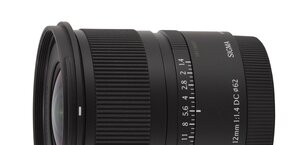Nikon Nikkor AF-S Fisheye 8-15 mm f/3.5-4.5E ED
4. Image resolution
Our resolution test was based on RAW files from the Nikon D500. In its case the best fixed-focal lenses are able to exceed 80 lpmm, very good ones reach 75-80 lpmm and the decency level is set near 41-43 lpmm.
Let’s check how the tested Nikkor 8-15 mm compares; its performance in the frame centre at 8, 12, and 15 mm presents a graph below.
Please Support UsIf you enjoy our reviews and articles, and you want us to continue our work please, support our website by donating through PayPal. The funds are going to be used for paying our editorial team, renting servers, and equipping our testing studio; only that way we will be able to continue providing you interesting content for free. |
- - - - - - - - - - - - - - - - - - - - - - - - - - - - - - - - - - - - - - - - - - - - - - - -

The shortest focal length is the best – from the maximum relative aperture to f/5.6 it gets excellent results of 75-76 lpmm. The middle of the focal range is slightly worse but even there by f/5.6 you can reach almost 74 lpmm. The maximum focal length is the weakest and the decrease of aperture fastness seems to be one of the reasons. The maximum aperture at this point is f/4.5 so by f/5.6 it is difficult to reach such high values as in the case of shorter focal lengths which have more space for stopping down. The maximum resolution result amounted to 67 lpmm, still a very good level. As you see, there are simply no weak points in the centre.
Now let’s check the situation on the edge of the frame – the appropriate graph his shown below.

The performance at the shortest focal length should be described in superlatives only. Near the maximum relative aperture we got very sensible results, close to 50 lpmm, and on stopping down the aperture they increase, exceeding 60 lpmm. In the 12-15 mm range the lens fares distinctly weaker, though. At the maximum relative aperture you get just useful resolution and on stopping down the aperture you can enjoy more or less sensible values bordering 50 lpmm but nothing else.
Both very unique Canon and Nikon constructions can’t be compared directly with each other as they were tested on different sensors and these sensors have different linear pixel density. Still it seems the Canon fares a bit better in the frame centre and the Nikkor shows smaller differences between the centre and the edge of the frame and its edge is nicer, especially near the maximum relative aperture. Still both these lenses are very original, sharp and, generally, a joy to use.
At the end of this part of our test traditionally we present crops taken from photos of our resolution testing chart, saved as JPEG files.
| Nikon D500, JPEG, 8 mm, f/4.0 |
 |
| Nikon D500, JPEG, 15 mm, f/4.5 |
 |






